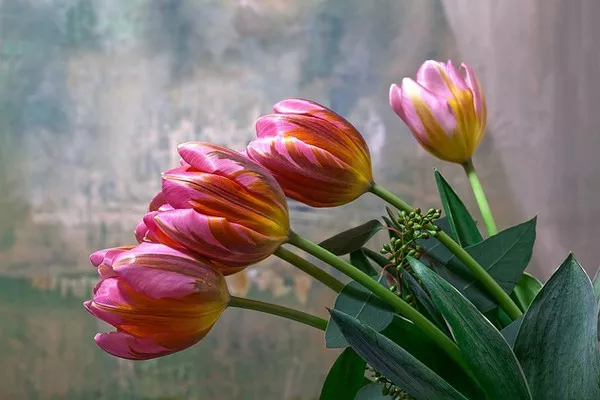Flowers have long held a special place in human culture, symbolizing a myriad of emotions, beliefs, and sentiments. From celebrations to condolences, from romance to remembrance, these delicate blooms communicate messages that transcend language barriers. Their significance stretches across time and geography, weaving a rich tapestry of meanings that speak to the human experience. In this exploration, we delve into the fascinating world of floriography, uncovering the hidden meanings behind some of the most beloved flowers.
Floriography: The Language of Flowers
Floriography, or the language of flowers, emerged during the Victorian era as a means of expressing sentiments that could not be spoken aloud due to societal constraints. It was a time when outward displays of emotion were discouraged, particularly in matters of courtship and affection. As a result, individuals turned to flowers to convey their feelings covertly.
Each flower was assigned a specific meaning or sentiment, allowing individuals to communicate their intentions through carefully chosen bouquets. The language of flowers became a sophisticated form of communication, with entire conversations unfolding through the arrangement and selection of blooms.
Rose: The Ultimate Symbol of Love
No discussion of flower symbolism would be complete without mentioning the rose, arguably the most iconic and universally recognized flower in the world. Renowned for its beauty and fragrance, the rose has long been associated with love, passion, and romance.
The color of the rose further refines its meaning, with red roses symbolizing passionate love, white roses representing purity and innocence, and yellow roses signifying friendship and joy. From Shakespearean sonnets to modern-day gestures of affection, the rose continues to reign supreme as the ultimate symbol of love and devotion.
Lily: A Symbol of Purity and Renewal
In many cultures, the lily holds profound symbolic significance, representing purity, virtue, and renewal. Its elegant blooms and delicate fragrance evoke feelings of tranquility and serenity, making it a popular choice for weddings and religious ceremonies.
The white lily, in particular, is often associated with purity and innocence, making it a fitting choice for bridal bouquets and spiritual offerings. In Christian iconography, the lily is frequently depicted alongside the Virgin Mary, symbolizing her purity and divine grace.
Tulip: Symbolism of Perfect Love and Royalty
The tulip’s journey from its humble origins in Central Asia to its status as a global symbol of beauty and elegance is a testament to its enduring appeal. With its distinctive cup-shaped petals and vibrant colors, the tulip has captivated hearts and minds for centuries.
In the language of flowers, the tulip carries various meanings depending on its color. Red tulips are often associated with declarations of love and passion, while yellow tulips symbolize cheerful thoughts and sunshine. In the Netherlands, the tulip holds additional significance as a symbol of wealth and prosperity, with tulip bulbs once commanding exorbitant prices during the infamous “Tulip Mania” of the 17th century.
Daisy: Innocence and Purity
Simple yet charming, the daisy has long been cherished for its unassuming beauty and cheerful demeanor. Its white petals and sunny yellow center evoke images of innocence and purity, making it a popular choice for floral arrangements and garden landscapes.
In the language of flowers, the daisy symbolizes purity, innocence, and new beginnings. Its association with childhood and simplicity lends it a timeless appeal, resonating with individuals seeking to reconnect with the joys of youth and the purity of the natural world.
Orchid: Symbol of Luxury and Beauty
With their exotic blooms and intricate patterns, orchids are revered as symbols of luxury, beauty, and refinement. From ancient civilizations to modern-day society, these enchanting flowers have captivated imaginations and inspired countless works of art and literature.
In the language of flowers, orchids convey messages of love, elegance, and sophistication. Their exquisite beauty and exotic allure make them popular choices for special occasions such as weddings, anniversaries, and romantic gestures. Additionally, orchids are often associated with strength and endurance, reflecting their ability to thrive in diverse environments and conditions.
Sunflower: Symbol of Happiness and Vitality
The sunflower’s vibrant petals and towering stalks have made it a beloved symbol of happiness, vitality, and resilience. Named for its resemblance to the sun, this cheerful flower has captured the hearts of people around the world with its radiant beauty and optimistic disposition.
In the language of flowers, the sunflower symbolizes adoration, loyalty, and longevity. Its ability to track the sun across the sky has inspired countless myths and legends, with many cultures viewing it as a symbol of divine guidance and spiritual enlightenment. Whether adorning a tabletop bouquet or swaying in a sun-drenched field, the sunflower serves as a reminder of life’s inherent beauty and boundless potential.
Conclusion
Flowers have a language all their own, speaking volumes without uttering a single word. From the romantic allure of the rose to the spiritual serenity of the lily, each bloom carries with it a rich tapestry of meanings and sentiments. Whether used to express love, convey condolences, or celebrate life’s milestones, flowers serve as tangible expressions of the human experience, bridging gaps and forging connections across cultures and generations. In unlocking the language of flowers, we gain a deeper appreciation for the beauty that surrounds us and the profound emotions that unite us all.


